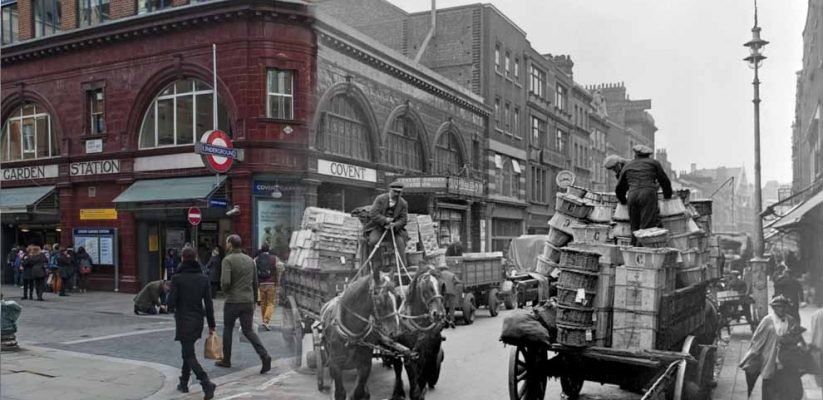“Tell me what your building’s façade looks like and I’ll tell you the era it belongs to!”
It’s quite a flimsy adaptation of the well-known quote “tell me who your friends are and I’ll tell you who you are”, but I promise to make it work!
…unless London is just a time capsule which makes us ruminate about its appearance now and then. How to spot the changes across generations when this metropolis behaves like a Victorian chameleon preserving the history in the most impeccable way?

I would lie if I said I did not enjoy my time in Berlin, this city never sleeps! But I could be called a great deceiver if I hide how much I miss London and the fast living pace in the UK. To drown my nostalgia and cheer up a little bit I was skimming through some random pictures of the British capital enjoying its famous landmarks and sniffing through some peculiar historical content.
A canvas illustrating Buckingham Palace caught my attention and lured me into its finesse. The painter did a fine job, but time “fooled” me again making me believe that I am staring at the 2015 Queen’s House. Then I realized that London’s architecture has barely changed since the Victorian Era and being awed by how well it has been preserved.

Just add a bit of colour to this picture, replace the 1955 Morris Oxford Series car with the new Mini Cooper 2015, slightly trim down those long skirts and you will create a vivid image of today’s Palace.

Piccadilly Circus does not fall short either! The imposing square still remains a mirror of the past surrounded by red double-decker buses and elevated by the Shaftesbury Memorial Fountain. Did you know that London buses were not always red? Before 1907, different routes had different-coloured buses.
(The name ‘Piccadilly’ originates from a seventeenth-century frilled collar named piccadil. Roger Baker, a tailor who became rich making piccadils lived in the area.)

Covent Garden has been an open-air market in former times and it has evolved into an exciting district offering a tremendous amount of shops, pubs and restaurants. Once, these narrow streets were worn by galloping horses fighting tooth and nail to carry farmers’ heavy goods. Today, thousands of tourists are crisscrossing the area from the wee morning hours until the dawn comes.

In 1890, Fleet Street was the home to the nation’s newspapers and that great barber, Sweeney Todd. In the present time, it is no longer the house of country’s magazines and journalists, but numerous coffee shops have cannibalized the place overnight.
As a matter of fact, London is full of pubs associated with artists, writers, and poets. The Fitzroy Tavern on Charlotte Street was famous for hosting Dylan Thomas and George Orwell.

London sets the scene for an incredible journey into the past, so why shouldn’t we play by the rules at least once and embark ourselves on a new adventure?
Remember those black and white movies where people were gathering in a big parking lot to watch cinema and eat home made popcorn? We can get a rich flavor of the ‘50s and ‘60s by attending the Secret Cinema in London. The concept is to some extent spicier than what we know and that’s why most people think of it more like a “Russian Roulette”. The movie itself, the location and the time – all these things are up in the air. Consider yourself blindfolded – now buy the ticket and show up where the organizers tell you. Pick your spot, get a comfy sitting pillow and bring your favourite drink.
…Speaking of which, I found this great cinematographic execution capturing London in 1927 & 2013.
You can see more of Now and Then pictures of London here.
Some facts in the post were taken from:
– London’s Hidden Walks by Stephan Miller
– London Book of Lists by Nick Rennision
Read this post and other stories on Diana’s personal blog
- 5 Innovative Tools and Untapped Platforms to Help You Ace Your Finals - May 1, 2017
- StartUp2017 – How to start a food business - January 16, 2017
- The Lean Start-up Series – From ideation to the “AHA” moment - December 8, 2016

